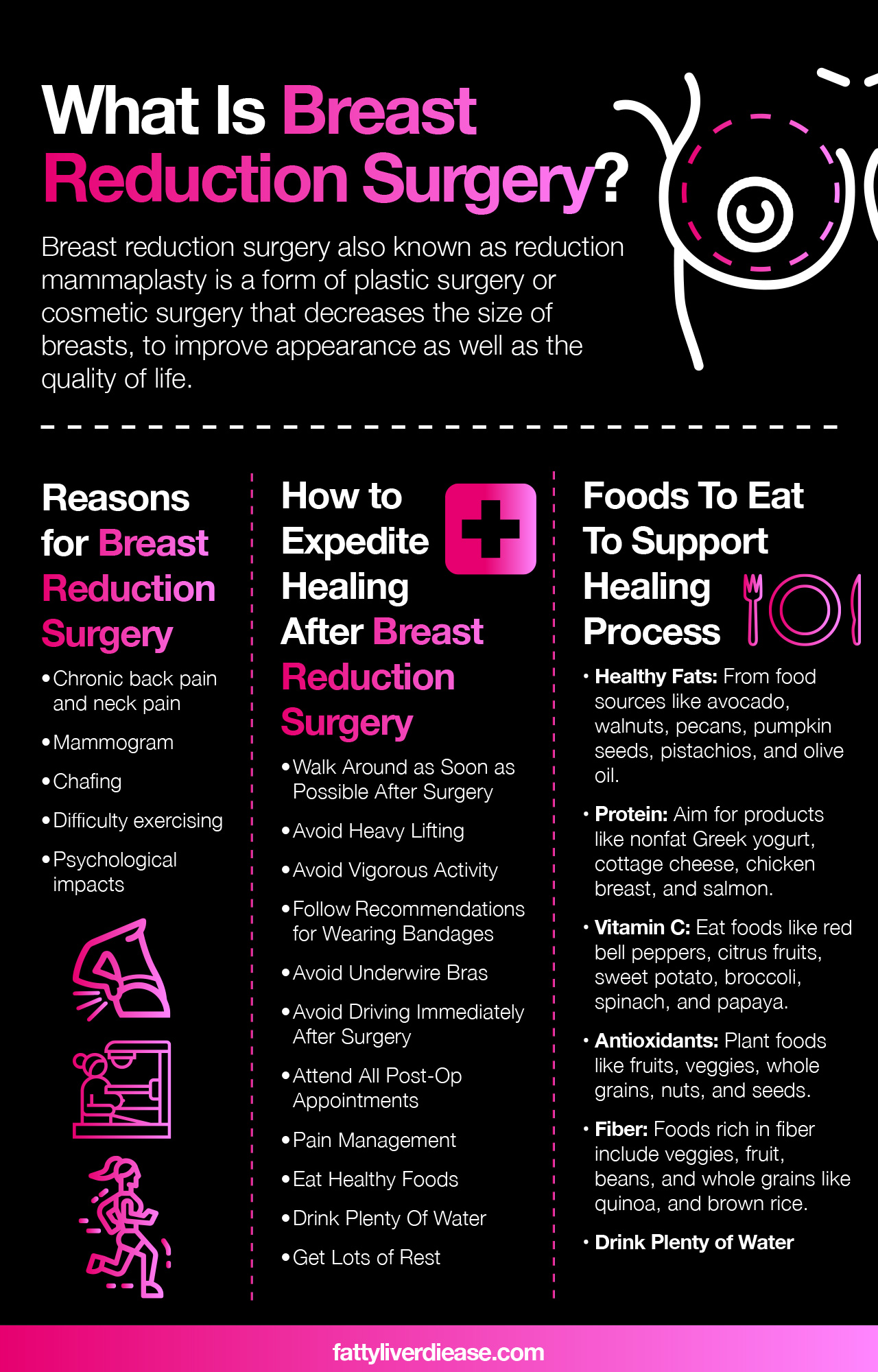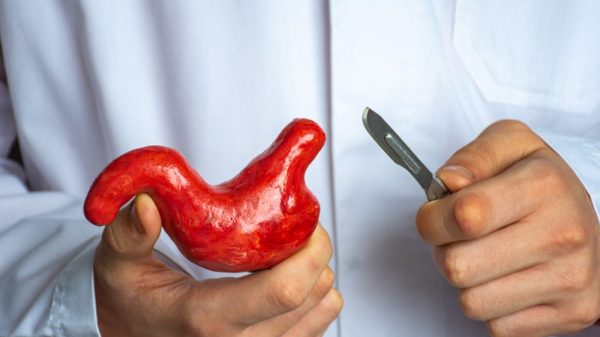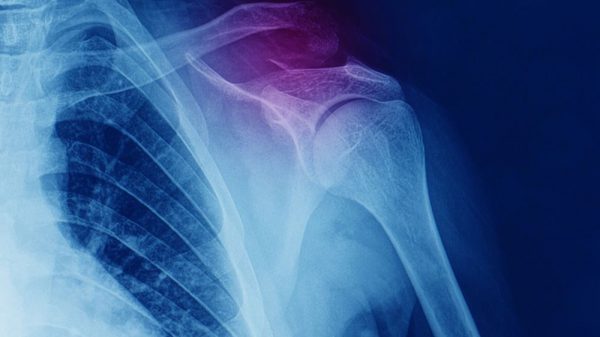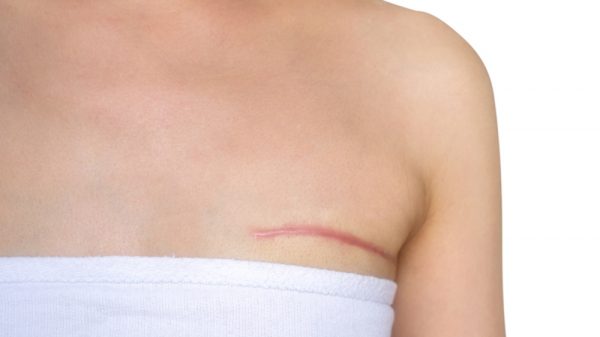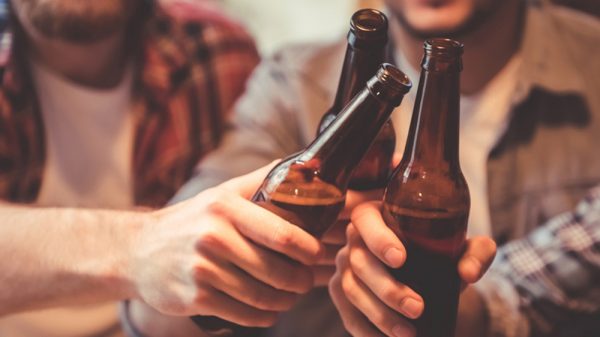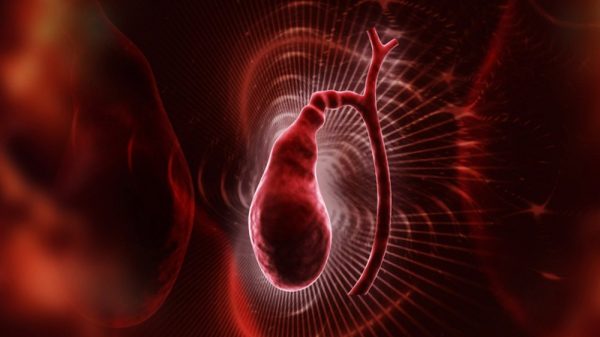Though it is often considered to be a cosmetic procedure, breast reduction surgery also helps improve your health. If you’re planning to have breast reduction surgery, then you are probably wondering what to expect. You might also be wondering how long breast reduction surgery recovery lasts. Here we answer all of your questions about breast reduction recovery, including how long it takes and what you can do to expedite recovery.
What Is Breast Reduction Surgery?
Breast reduction surgery is a form of plastic surgery or cosmetic surgery that decreases the size of breasts, to improve appearance as well as the quality of life. Breast reduction surgery is also referred to as reduction mammaplasty.
Reasons for Breast Reduction Surgery
Women with very large breasts often face many difficulties in everyday life that prompt them to explore breast reduction surgery. Overly large breasts may also cause health problems. Here are some of the common reasons women seek breast reduction surgery:
- Chronic back pain and neck pain: Chronic backaches may result from large breasts pulling incessantly at the chest, causing back pain and neck pain over time. The constant pressure of large breasts can also contribute to shoulder pain and tension.
- Mammogram: Mammograms are breast analysis tests that can detect the presence of lumps and growths that could potentially be cancerous. If too much breast tissue is present, it may be harder to detect unusual growths.
- Chafing: Large breasts can cause chafing and rashes on the chest, or on the skin below the chest.
- Difficulty exercising: It can be challenging to find a bra that provides enough support to allow for exercise. Having breasts that are too large can be cumbersome and make exercising uncomfortable.
- Psychological impacts: Feeling weighted down by large breasts can have a significant impact on a woman’s self-image. The woman may not feel comfortable in her own skin and may feel insecure in the way she fits in her clothes. A breast reduction surgery can help create breasts that are a comfortable size and match a woman’s body.
Possible Complications
All surgical procedures are accompanied by potential risks. Keep in mind that serious complications are rare. Here are a few of the most common complications associated with breast reduction surgery.
- Infection: Anything that involves incisions exposes the body to the air and bacteria, which increases the risk of infection.
- Loss of nipple sensitivity: It is possible that in the aftermath of a breast reduction surgery, some nerves sustain damage and nipple sensitivity is lost. In this case, it may be impossible to breastfeed following the procedure.
What to Expect Before, During, and After the Procedure
When you are preparing to undergo breast reduction surgery, it’s helpful to have a blueprint of what to expect throughout the entire surgical process.
Before Breast Reduction Surgery
If you are thinking about undergoing a breast reduction procedure, it’s a good idea to make an appointment with a board-certified plastic surgeon. The plastic surgeon will be able to evaluate your symptoms, your breast size and shape, and breast size and shape that you desire. During preoperative appointments, your plastic surgeon will be able to formulate a plan for what will work best for your specific body.
Before surgery, you may need to undergo preoperative testing, which may involve blood tests and an electrocardiogram, based on your age. Preoperative testing ensures that you can safely undergo general anesthesia and a surgical procedure.
During Breast Reduction Surgery
On the day of surgery, the plastic surgeon and anesthesiologist will visit you to make sure you are feeling ready for the procedure. You will then be brought into the operating room and placed under general anesthesia, which means you will be unconscious and unaware of what is going on.
There are several ways that a surgeon may perform a breast reduction procedure. For patients who only need small changes in breast size, a liposuction procedure might be appropriate. In other cases, the surgeon will make an incision around each areola as well as vertically down breasts, allowing the surgeon will then remove excess breast tissue. The last method involves incisions around the areola, vertically down the breast, and horizontally along the bottom of the breast. These incisions allow for maximum access to breast tissue and work best for women with larger breasts that require significant repositioning and tissue removal.
After Breast Reduction Surgery
After the procedure, you will likely have drainage tubes positioned in your breasts, to allow for excess blood and fluids to be removed from the surgical area. Generally, breast reduction procedures are outpatient procedures and you may go home on the same day that you received the procedure. However, some cases may require that you are monitored for a day or two following the procedure.
What is the recovery time for breast reduction surgery? Breast reduction recovery time varies depending on each patient. Some individuals will be back to normal daily activities within a couple of weeks. Generally, however, it may take up to 6 weeks to make a full recovery following breast reduction. It may take a few months for all swelling to go down completely, and for the surgery to reveal full results.
How to Expedite Healing After Breast Reduction Surgery
Breast reduction surgery recovery can be difficult, but there are steps you can take to speed up the healing process, so you can get back to your normal life as quickly as possible. Here are a few tips to keep in mind.
1. Walk Around as Soon as Possible After Surgery
After you’ve undergone breast reduction surgery, it’s important to move around and get your blood flowing as soon as you are cleared. Fitting gentle activity into your routine is critical for preventing blood clots, which may arise from remaining sedentary on the operating table.
2. Avoid Heavy Lifting
The muscles in your arms and back are connected to those in your chest, so heavy lifting can cause pulling and tearing to the incision site and other tissues. It’s important to avoid heavy lifting for several weeks, as you recover. Before lifting heavy objects, it is imperative to check with your surgeon and ensure that you are cleared.
3. Avoid Vigorous Activity
Vigorous activity such as running and jumping should be avoided in the weeks following surgery. Rapid movements and strenuous activity may result in movement of the breasts that can increase the risk of injury and infection at the incision sites.
4. Follow Recommendations for Wearing Bandages
Following surgery, you will be wearing many bandages and a surgical bra to protect the incision sites and provide your healing breasts with support. You may also wear an elastic bandage to help support and protect your healing breasts.
5. Avoid Underwire Bras
During the recovery period, avoid underwire bras. The wire may poke into your healing wound and cause irritation. Instead, opt for comfy sports bras that don’t pinch or poke following surgery.
6. Avoid Driving Immediately After Surgery
Immediately following surgery, you will be recovering from general anesthesia, so you should avoid driving. It’s important to arrange for someone to drive you home from surgery. It’s also best to avoid driving for the first week following surgery, since your reaction time and range of movement may be impaired by pain, painkillers, and bandages.
7. Attend All Post-Op Appointments
After your procedure, your surgeon will want you to come in for postoperative follow-up appointments, in order to monitor your progress and ensure that you are healing as expected. During these follow-up appointments, you will be able to address any concerns you might have.
8. Pain Management
After surgery, you will experience some bruising, soreness, swelling, and pain around your breasts. Your surgeon will prescribe painkillers to manage the pain for the first several days following your procedure. After you’ve finished your course of prescription pain medications, you will be able to manage the pain and inflammation using over-the-counter medications such as acetaminophen. Be careful with nonsteroidal anti-inflammatory drugs (NSAIDs), since these may increase the risk of bleeding.
10. Eat Healthy Foods
Did you know that eating healthy foods can help your body heal faster following a breast reduction procedure? Let’s take a look at the crucial nutrients and foods that support the healing process.
Healthy Fats
Healthy fats like polyunsaturated and monounsaturated fats are crucial for lowering levels of systemic inflammation throughout the body and supporting the regrowth of new tissue. You can get plenty of healthy fats from food sources like avocado, walnuts, pecans, pumpkin seeds, pistachios, and olive oil. Healthy fats are also present in fatty fish like salmon, mackerel, and sardines.
Protein
Protein is one of the most crucial nutrients that you can get following surgery. Protein is made of amino acids, which the body uses to build to produce enzymes, neurotransmitters, and hormones. Amino acids also play a crucial role in the healing process because they are important for synthesizing muscle tissue, ligaments, and other soft tissues. Generally, there are two categories of amino acids: essential amino acids and nonessential amino acids.
Nonessential amino acids are not nutritionally required, since the body is able to manufacture them on its own. On the other hand, essential amino acids must be obtained from dietary sources. The body requires optimal ratios of essential amino acids on a daily basis and requires even more during recovery from injury and illness. Optimal ratios of essential amino acids can be found in animal protein. The best sources of animal protein to eat after surgery are those that are low in saturated fat. Aim for products like nonfat Greek yogurt, cottage cheese, chicken breast, and salmon.
Vitamin C
Vitamin C is known to help fortify the immune system and promote healing from a cold or flu. This healing vitamin also helps the healing process following surgery by strengthening the immune system and supporting collagen synthesis and wound healing. To get plenty of vitamin C in your diet, eat foods like red bell peppers, citrus fruits, sweet potato, broccoli, spinach, and papaya into your diet.
Antioxidants
Antioxidants are abundant in plant foods like fruits, veggies, whole grains, nuts, and seeds. Antioxidants are tiny compounds that are categorized as polyphenols or carotenoids. Antioxidants carry no caloric value, but they have a significant impact on biological processes in the body. In particular, antioxidants fight against oxidative stress, which is the accumulation of waste products in cells in the form of free radicals. These free radicals damage healthy tissue. Eating lots of fruits and veggies helps neutralize these free radicals so the body can heal faster. Eat plenty of plant-based foods to ensure that you’re getting the antioxidants that your body needs to fight oxidative stress.
Fiber
Though prescription painkillers may relieve your pain, they are accompanied by unfortunate side effects like constipation. Getting plenty of fiber in your daily diet can help you produce bowel movements more regularly and fight against painkiller-induced constipation. Plus, fiber helps support lower levels of systemic inflammation. Healthy bacteria in the microbiome feed on fiber and produce anti-inflammatory compounds as a byproduct, which are released into the bloodstream and travel to the incision site. Foods rich in fiber include veggies, fruit, beans, and whole grains like quinoa, brown rice, and
11. Drink Plenty of Water
Staying hydrated is critical when you are recovering from surgery. In particular, water increases your blood flow, allowing for nutrients and oxygen to be effectively circulated throughout the body, including the breasts. Sufficient nutrients and oxygen are crucial for supporting a fast healing process. Aim to drink at least the recommended 8 glasses of water per day.
12. Get Lots of Rest
So much of the recovery process happens while we sleep, and the immune system works best when we are getting enough sleep. If you are recovering from breast reduction surgery, it’s important to get at least 8 hours of good sleep each night. Plus, you may want to nap during the day, and that’s totally ok! Aim to take about a week off from work so you can sleep and recovery.
Breast Reduction Recovery: Conclusion
Recovery from breast reduction may take several months, but it is worth it. Your final results will yield a significant reduction or complete elimination of back pain, shoulder pain, and neck pain. You may also feel more able and comfortable exercising and engaging in strenuous activities. Finally, you may also gain a sense of confidence and a boost in self-image. Following strategic steps during the healing process can help you reach a full recovery as fast as possible.
